Aircraft carriers are the ultimate symbols of naval power, combining massive size, advanced technology, and incredible versatility. These floating fortresses serve as mobile airbases, capable of projecting military strength across oceans and supporting a variety of missions, from combat operations to humanitarian aid. Each carrier is uniquely designed to accommodate specific aircraft, personnel, and systems, making them vital for global security and defense. With sizes ranging from towering giants like the USS Gerald R. Ford to smaller, specialized carriers like Thailand’s Chakri Naruebet, these ships demonstrate the innovation and ambition of the nations that build and operate them. Here’s a closer look at the 18 largest aircraft carriers in the world, highlighting their size, capabilities, and impact on modern naval warfare.
USS Gerald R. Ford (CVN-78)

The USS Gerald R. Ford is the largest aircraft carrier in the world, measuring an incredible 1,106 feet in length and weighing over 100,000 tons. It was commissioned in 2017 as the lead ship of a new class of carriers for the U.S. Navy. With its nuclear-powered propulsion system, it can operate for 25 years without refueling. The carrier boasts advanced technology, including the Electromagnetic Aircraft Launch System (EMALS) and dual-band radar. It accommodates over 4,500 personnel, including crew and air wing, and has the capacity to carry up to 90 aircraft. The flight deck is expansive, allowing for more efficient launch and recovery operations compared to older carriers. Designed for modern warfare, it represents a leap in naval aviation capability.
USS Nimitz (CVN-68)
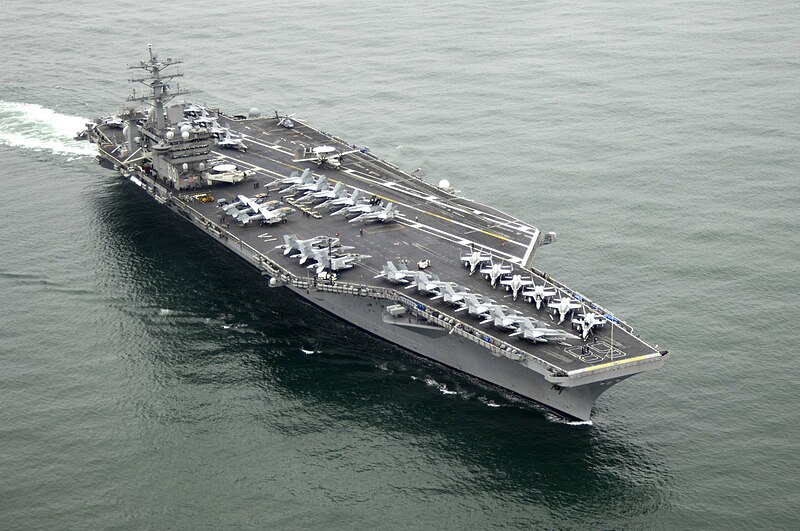
The USS Nimitz, launched in 1972, is one of the most iconic carriers and among the largest at 1,092 feet in length. It displaces over 100,000 tons, making it a titan of naval engineering. This nuclear-powered vessel can carry up to 85 aircraft, including fighters, helicopters, and reconnaissance planes. Housing around 5,000 personnel, the carrier is essentially a floating city. Its flight deck is meticulously designed to handle simultaneous takeoffs and landings with precision. Over decades of service, the USS Nimitz has been continuously upgraded with advanced systems to remain combat-ready. Even after 50 years, it remains a cornerstone of U.S. naval power.
HMS Queen Elizabeth (R08)
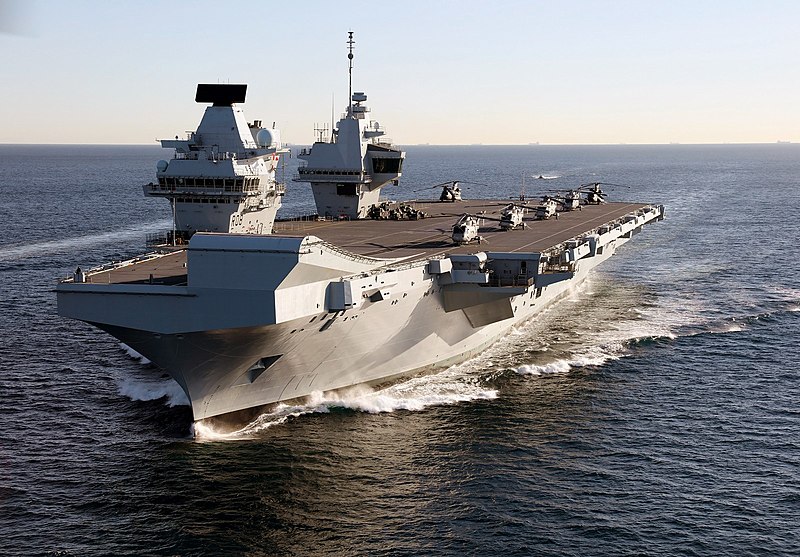
The HMS Queen Elizabeth is the largest warship ever constructed for the Royal Navy, stretching 919 feet in length and displacing 65,000 tons. Commissioned in 2017, it is powered by gas turbine and diesel-electric engines, providing a top speed of 25 knots. The carrier features two large islands on its flight deck—one for navigation and the other for air traffic control. Its design supports short take-off and vertical landing (STOVL) aircraft, including the F-35B Lightning II. It can house up to 1,600 personnel, including the crew and air wing. With a capacity for around 40 aircraft, it serves as a critical asset for modern British defense. The ship is also equipped with advanced radar and defensive systems, ensuring operational safety.
Charles de Gaulle (R91)

The Charles de Gaulle, France’s flagship carrier, is the only nuclear-powered aircraft carrier outside of the U.S. Navy. It measures 858 feet in length and displaces 42,000 tons. Launched in 2001, it can reach speeds of up to 27 knots thanks to its robust nuclear propulsion system. The carrier supports a variety of aircraft, including Rafale M fighter jets and E-2C Hawkeye radar planes. With a complement of over 1,900 personnel, it plays a central role in French naval operations worldwide. Its flight deck and hangar can hold around 40 aircraft, making it versatile for multiple mission types. As France’s most advanced naval vessel, it serves both as a military platform and a symbol of French naval power.
USS John C. Stennis (CVN-74)

The USS John C. Stennis, a Nimitz-class nuclear-powered aircraft carrier, measures 1,092 feet in length and weighs approximately 100,000 tons. Commissioned in 1995, it serves as a key component of U.S. naval operations. Capable of carrying up to 90 aircraft, it supports a range of missions, from airstrikes to humanitarian aid. The carrier’s crew of over 5,000 ensures its complex operations run smoothly. Its flight deck is equipped for high-tempo takeoff and landing operations, crucial for maintaining air superiority. Over the years, the vessel has undergone several upgrades, including modernized radar and communication systems. It is a critical asset for maintaining U.S. dominance at sea.
Admiral Kuznetsov (063)
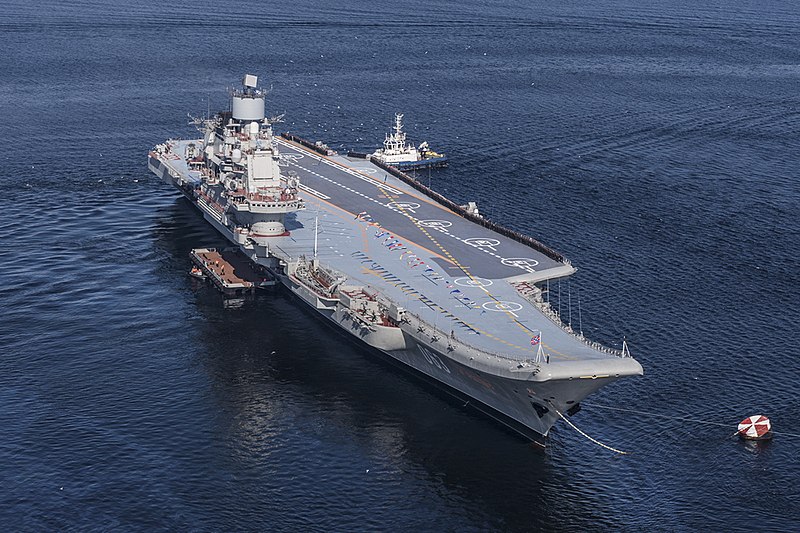
The Admiral Kuznetsov is Russia’s largest and only operational aircraft carrier, measuring 1,001 feet in length and displacing 58,600 tons. Launched in 1985, it is powered by conventional steam turbines and has a top speed of 29 knots. Unlike Western carriers, it features a ski-jump ramp for launching aircraft, such as the Su-33 and MiG-29K fighters. The carrier houses over 1,900 crew members and has a limited air wing capacity of around 40 aircraft. In addition to its aviation capabilities, the Kuznetsov is heavily armed with anti-ship missiles and defensive systems. Despite its size, it has faced operational challenges, including maintenance issues. Nonetheless, it remains a vital symbol of Russian naval strength.
Liaoning (16)
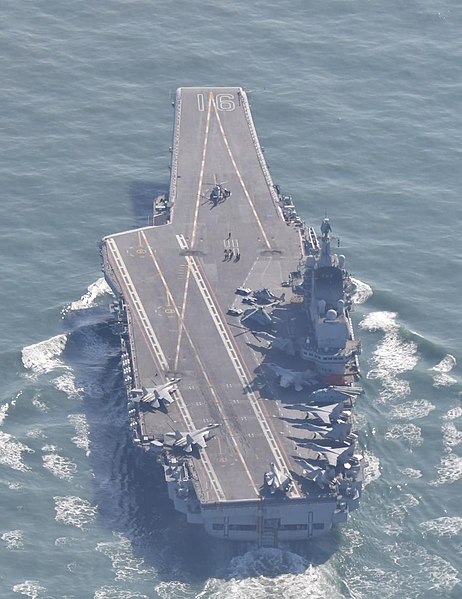
/ Wikimedia Commons
China’s Liaoning, formerly a Soviet carrier, was modernized and re-commissioned in 2012. Measuring 999 feet in length and displacing 58,600 tons, it is a key component of China’s growing blue-water navy. Powered by conventional steam turbines, the carrier can reach speeds of up to 32 knots. It features a ski-jump ramp for launching J-15 fighter jets and can house up to 2,000 personnel. With a flight deck capable of supporting around 40 aircraft, it serves primarily as a training and development platform for Chinese carrier operations. Despite being smaller than U.S. carriers, it represents a significant leap in China’s maritime power. Its presence has shifted the balance in the Pacific region.
Shandong (17)
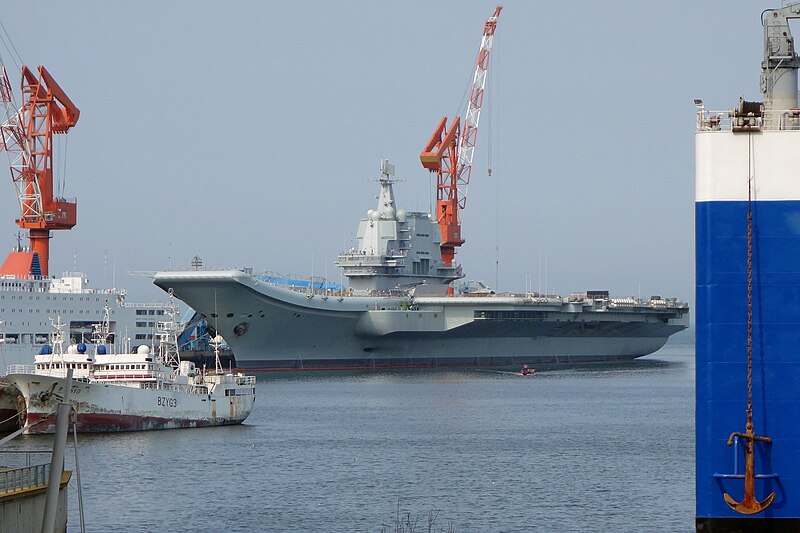
The Shandong, China’s first domestically built aircraft carrier, measures 1,033 feet in length and displaces 70,000 tons. Launched in 2019, it reflects China’s growing ambitions in naval warfare. Powered by conventional engines, it supports a top speed of around 30 knots. The carrier features a ski-jump ramp and operates J-15 fighter jets, as well as helicopters. With a complement of around 2,500 personnel, it represents a significant advancement over its predecessor, Liaoning. It has a slightly larger air wing capacity, capable of holding up to 44 aircraft. The Shandong underscores China’s commitment to becoming a leading maritime power.
USS Ronald Reagan (CVN-76)
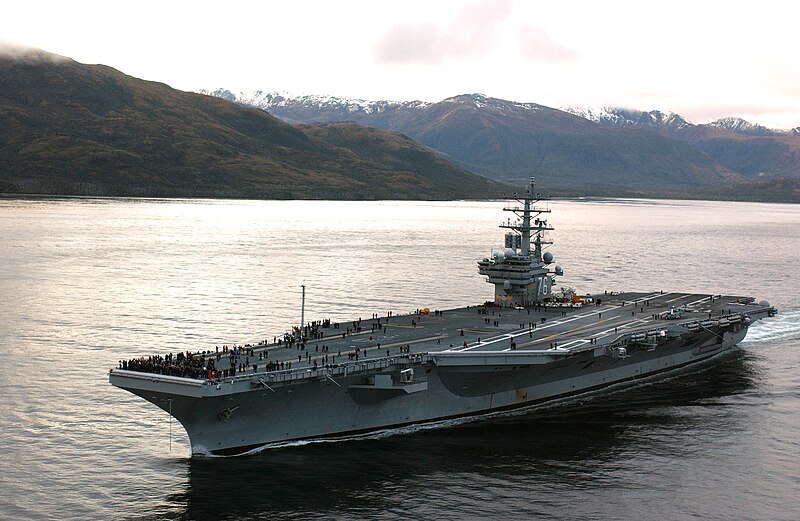
The USS Ronald Reagan, a Nimitz-class carrier, stretches 1,092 feet in length and displaces over 100,000 tons. Commissioned in 2003, it remains one of the most advanced carriers in the U.S. Navy. With a nuclear-powered engine, it can operate for decades without refueling and reach speeds of 30 knots. The carrier accommodates a crew of over 5,000 and has the capacity to carry up to 90 aircraft. Its flight deck is optimized for high-intensity operations, allowing simultaneous takeoffs and landings. The ship has participated in numerous missions, including humanitarian relief and military operations. Regular upgrades ensure its technological edge in modern warfare.
USS Theodore Roosevelt (CVN-71)
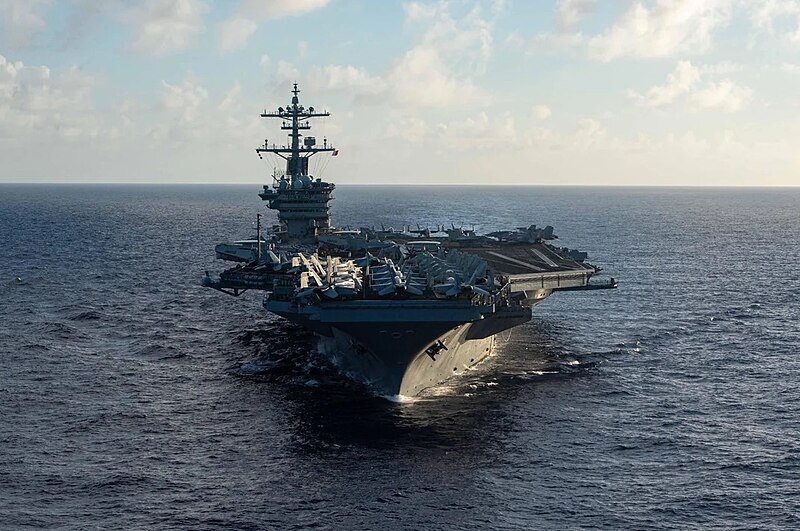
The USS Theodore Roosevelt is another powerhouse from the Nimitz class, measuring 1,092 feet in length and weighing approximately 100,000 tons. Launched in 1984, it has a nuclear-powered propulsion system that allows unlimited range for extended operations. The carrier can carry up to 90 aircraft, including F/A-18 Hornets and E-2 Hawkeyes. It houses around 5,000 personnel and boasts an advanced radar system for airspace control. Its flight deck supports round-the-clock operations, ensuring combat readiness at all times. The Roosevelt has seen action in several major conflicts, including the Gulf and Iraq wars. It remains a critical component of U.S. naval dominance.
USS Harry S. Truman (CVN-75)

The USS Harry S. Truman, another Nimitz-class carrier, measures 1,092 feet in length and displaces over 100,000 tons. Commissioned in 1998, it is a nuclear-powered vessel designed for global operations. The carrier supports up to 90 aircraft, ranging from fighter jets to surveillance planes. It has a crew of over 5,000, making it a floating city capable of independent operations. Equipped with cutting-edge communication systems, it serves as a command center for naval missions. The Truman has been deployed in numerous military campaigns, demonstrating its versatility in combat and humanitarian efforts. Its robust design ensures decades of operational readiness.
USS Carl Vinson (CVN-70)

The USS Carl Vinson is a formidable Nimitz-class aircraft carrier, measuring 1,092 feet and displacing 100,000 tons. Commissioned in 1982, it has played a pivotal role in U.S. military operations for over four decades. Its nuclear propulsion allows it to travel at speeds exceeding 30 knots, with nearly unlimited operational range. The ship supports up to 90 aircraft and houses a crew of over 5,000. Its flight deck is equipped for rapid deployment and recovery of aircraft, ensuring maximum operational efficiency. The Carl Vinson has been a key player in operations like Desert Storm and Enduring Freedom. Continuous upgrades have kept it at the forefront of naval technology.
Cavour (550)
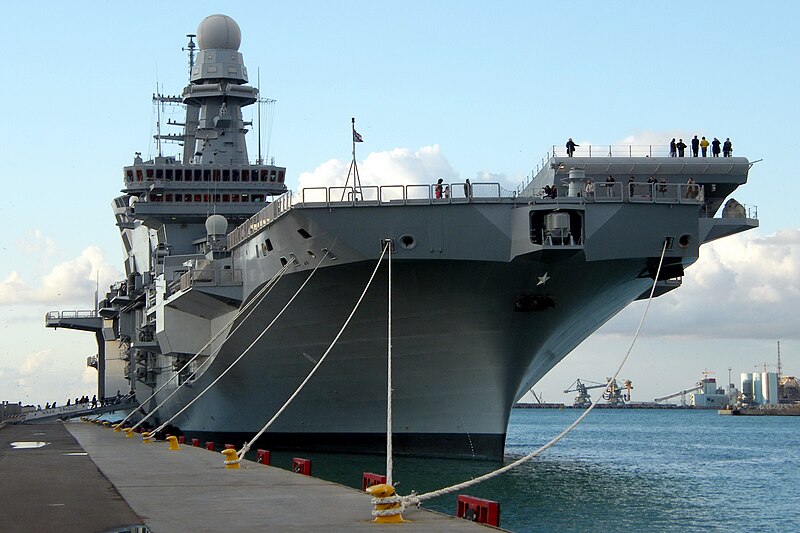
Italy’s Cavour, a flagship of the Italian Navy, measures 804 feet in length and displaces 30,000 tons. Commissioned in 2008, it serves as both an aircraft carrier and an amphibious assault ship. Powered by gas turbines, it can reach speeds of 28 knots and has a range of 7,000 nautical miles. The carrier supports AV-8B Harrier jets and F-35B Lightning II aircraft, as well as helicopters. It houses around 1,200 personnel, including crew and air wing. With a capacity for 30 aircraft, it is well-suited for both combat and humanitarian missions. The Cavour’s design reflects Italy’s commitment to versatile naval operations.
São Paulo (A12)
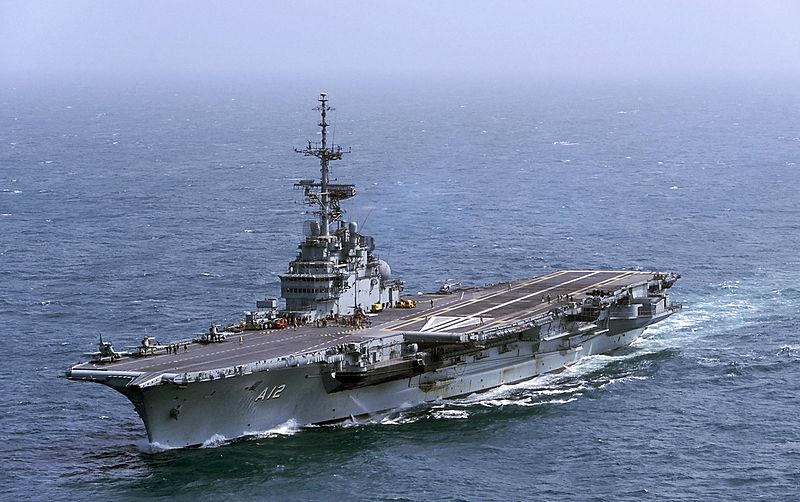
The São Paulo, formerly operated by the Brazilian Navy, measures 869 feet in length and displaces 32,800 tons. Originally a French carrier, it was acquired by Brazil in 2000. Powered by steam turbines, it could reach speeds of 32 knots. The carrier supported A-4 Skyhawk fighter jets and various helicopters, housing around 1,300 personnel. Despite its capabilities, operational issues limited its effectiveness, and it was decommissioned in 2017. Its flight deck could accommodate up to 40 aircraft, making it one of South America’s largest carriers during its service. The São Paulo symbolized Brazil’s ambitions for a modern naval force.
Kaga (DDH-184)
after_renovation.jpg)
Japan’s Kaga, a helicopter carrier, measures 814 feet in length and displaces 27,000 tons. Commissioned in 2017, it is part of Japan’s Izumo-class carriers. Powered by gas turbines, it reaches speeds of 30 knots and supports STOVL operations for F-35B aircraft. The carrier houses around 500 personnel and can carry up to 28 aircraft, including helicopters and fighter jets. Its design focuses on anti-submarine warfare and humanitarian missions, making it a versatile naval asset. The Kaga represents Japan’s growing emphasis on maritime security in the Pacific. Advanced radar and communication systems ensure its readiness for modern challenges.
Izumo (DDH-183)
seen_from_the_sky_10-03-2021.jpg)
The Izumo, Japan’s largest warship since World War II, measures 814 feet in length and displaces 27,000 tons. Commissioned in 2015, it serves as a multi-purpose carrier, supporting both helicopters and F-35B fighters. The vessel is powered by gas turbines, enabling speeds of 30 knots. With a complement of 500 personnel, it supports anti-submarine and disaster relief missions. Its flight deck can accommodate up to 28 aircraft, providing flexibility for a variety of operations. The Izumo underscores Japan’s commitment to maintaining peace and stability in the region. Recent upgrades have enhanced its capability to operate fixed-wing aircraft.
Chakri Naruebet (CVH-911)
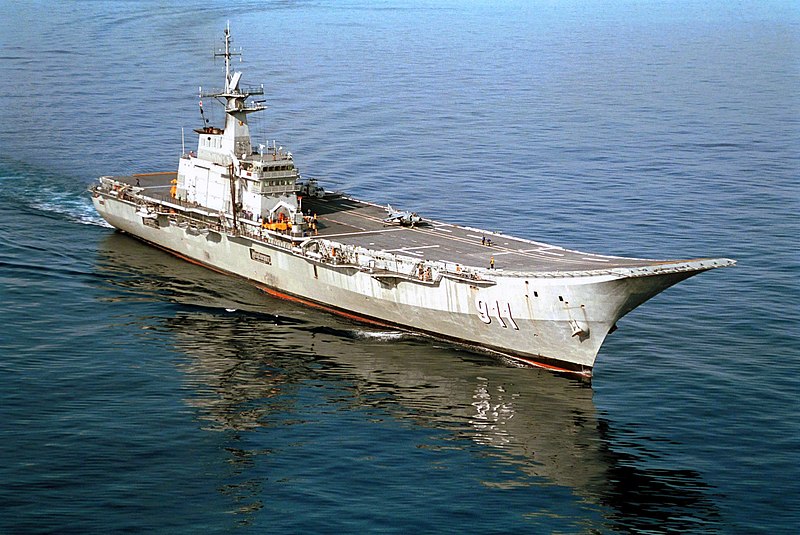
Thailand’s Chakri Naruebet is the smallest aircraft carrier on this list, measuring 597 feet in length and displacing 11,500 tons. Commissioned in 1997, it was built in Spain and designed primarily for helicopter operations. Powered by gas turbines, it has a top speed of 25 knots. The carrier can support Harrier jets and helicopters, housing around 600 personnel. Its small size limits its operational range and air wing capacity, which is around 10 aircraft. Despite its limitations, the Chakri Naruebet serves as a symbol of Thailand’s maritime aspirations. It is primarily used for disaster relief and search-and-rescue missions.
Juan Carlos I (L61)

Spain’s Juan Carlos I, a multi-purpose amphibious assault ship, also serves as a light aircraft carrier. Measuring 757 feet in length and displacing 26,000 tons, it is a versatile naval asset. Commissioned in 2010, it is powered by diesel-electric propulsion and reaches speeds of 21 knots. The carrier is equipped with a ski-jump ramp, enabling it to launch Harrier jets and helicopters efficiently. It can house up to 900 personnel, including crew and embarked forces, making it ideal for amphibious operations. The flight deck supports 12 aircraft at a time, ranging from fighter jets to utility helicopters. Designed for flexibility, the Juan Carlos I is used for both military missions and humanitarian assistance, reflecting Spain’s global naval presence.
This article originally appeared on Rarest.org.
More From Rarest.Org
The United States is home to some of the largest and most influential churches in the world. These megachurches attract tens of thousands of worshippers every week. They offer a mix of contemporary worship, community outreach, and engaging sermons. Read more.
Many classic video games have faded into obscurity, lost to time as technology rapidly advanced and gaming tastes evolved. These vintage titles, once revolutionary, are now rare gems that only true gaming enthusiasts remember. Read more.
The largest telescopes on Earth allow us to peer into the universe with unmatched clarity. These massive instruments are spread across different countries, helping astronomers study distant galaxies, stars, and planets. Read more.



